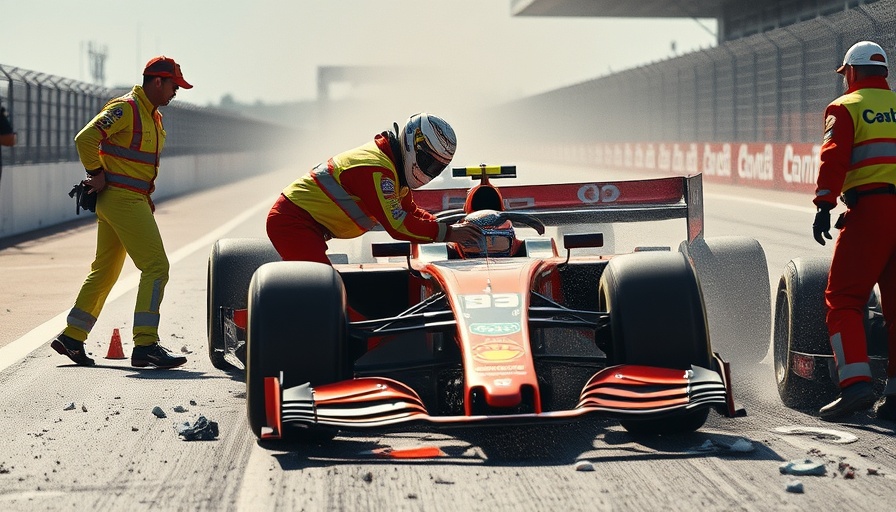
The High Stakes of Indy 500 Testing: A Closer Look
As testing for the prestigious Indianapolis 500 kicks off, it is both a thrilling and dangerous realm for drivers. Kyle Larson, a NASCAR champion making his second Indy 500 appearance, learned this firsthand when he crashed during a critical boost session. Such sessions are designed to allow drivers to fine-tune their vehicle setups ahead of the race, but they also come with significant risks. Larson's incident, where he hit the wall not once but twice, serves as a stark reminder of the unpredictability in motorsports.
Understanding the Crash: What Went Wrong?
During his second lap of a qualifying boost session, Larson found himself losing control as he exited turn 1. This moment is not just the outcome of a single miscalculation; it resonates with the environment of high-speed, high-pressure racing. As Larson drifted up the track and collided with the outer wall, he faced the consequences of pushing the limits, an inherent part of racing. What is crucial to note is that this crash is Larson's first during his IndyCar career, marking a dramatic shift from the previous year's flawless run during testing and competition.
Comparative Insights: A Race of Risk Among Peers
Moments after Larson's incident, fellow competitor Takuma Sato—a two-time Indianapolis 500 champion—also experienced his own mishap in the same corner. This parallel highlights not only the challenges within the sport but also serves as a cautionary tale about the risks competitors face whilst testing. Both drivers were assessed by medical staff and cleared to continue, yet their early setbacks leave them with less practice time before the race, potentially impacting their preparation and strategy for the Indianapolis 500.
The Emotional Toll of Crashing in Competition
Each crash carries an emotional charge that affects not just the drivers but their teams and fans. Motorsports athletes endure immense pressures, aiming to push both themselves and their vehicles to the limit. Crashes can invoke feelings of disappointment, frustration, and fear. For drivers like Larson, who have invested so much time and effort into preparing for a race as legendary as the Indy 500, such moments can be disheartening. However, it can also serve as a catalyst for resilience, driving them to return stronger in subsequent sessions.
A Look Ahead: What's Next for Kyle Larson?
Despite the setback, Larson's spirit remains resilient as he prepares to qualify for the 2025 Indy 500. His two-year partnership with McLaren signifies his commitment to this racing challenge. The mind of a racer is often geared towards learning from each experience, and Larson’s crash might very well become a learning opportunity that informs his subsequent strategy when he returns to the track next month.
As motorsports fans, it’s imperative to keep a watchful eye on both Larson and Sato’s recovery and preparation efforts, especially as they seek to transcend their testing woes in pursuit of racing fame at the Indianapolis 500. These moments are part of the larger narrative of racing, where courage, perseverance, and the thrill of competition converge.
 Add Row
Add Row  Add
Add 




 Add Row
Add Row  Add
Add 

Write A Comment